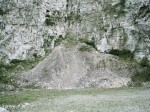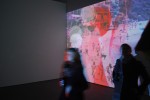May 2012
April 2012
March 2012
February 2012
January 2012
November 2011
October 2011
September 2011
August 2011
July 2011
June 2011
May 2011
April 2011
March 2011
February 2011
December 2010
November 2010
October 2010
September 2010
August 2010
July 2010
May 2010

|
Art Review: Departure and Graft at Liverpool John Moores
June 20, 2011 Liverpool John Moores’ aptly named degree show is a highly professional group production. |
A couple of weeks ago I jumped the train to Liverpool to catch the last day of the John Moores Fine Art degree show. Normally I hate seeing a show on the eve of its closure; you feel like you missed the boat, the works can feel tired and there is always one moron in the pack who has to take their work down early and pissed off to Tenerife. However Departure, the aptly named degree show from Liverpool’s latest batch of graduates, follows its namesake and is a welcome departure from the usual conventions that taint many of the degree shows I have visited in the past.
Departure was put together by Curator Lorenzo Fusi, and whilst he states in the exhibition publication editorial that ‘There is no such thing as curating a Fine Art degree show’, it is apparent that his influence has improved the professionalism of the show. Most of the work is in two purpose-built studio spaces and is clearly labelled on a floor plan by each door. There are no tacky name tags glued to each person’s work and the overall finish is impressive. Departure didn’t feel like a collection of solo shows, with each student wanting their own little box to impose on: it felt like a concise and spacious group show that didn’t overwhelm the viewer.
The work itself was much less consistent. In his catalogue editorial Lorenzo Fusi lauds praise on the students for their courage in working in such challenging times. Whilst this is true for most, some felt like they were approaching the course as a means to an end and it is hard to imagine how some work would slot into a studio practice after university.
Aime Cooper’s work ‘Postcards’ was the first piece I spent time with. Her practice was engaging with the histories of found objects. She brought her postcard collection, which was long defunct of purpose, back to life by returning the postcards to their original owners, bridging the past and present. However, my point of interest was the tangibility of these memories, floating around at flea markets across the country and, with the increased use of digital media, questioning whether future generations would have any physical tokens of sentiment to interact with.

It’s impossible to overlook Mark Anderton’s work, the scale of which is bigger than anything I have ever seen at degree show level. Mark is concerned with the histories embodied within architectural forms. He has reconstructed a section of Liverpool’s overhead railway in the grounds of the university. He aims to challenge the juxtaposition between perceptions of cultural heritage and society’s need for change. There is no doubt that an object charged with so much local history provokes a response from the viewer, and this labour intensive practice feels like the beginning in an extremely fascinating area of investigation. I will be keen to see how this develops in the future.
Whilst I was in the building I also viewed Graft, the graduate showcase for Liverpool’s Graphic Design department. Their catalogue, two newspapers rolled and bound in a yellow poster stacked up high by the entrance, looked slick and was a great introduction to a well-executed collection of work.
William Daws’ work was the most imaginative in the show. His hand-painted characters applied directly onto the wall and his transparent, double sided screen-print were typical of the self confidence displayed by all of the students. The collective endeavour in Graft was plain to see and this deliberately unpretentious showcase of work demonstrated how their efforts had paid off.
Graft and Departure catalogues have been added to the collection of Rotherham Zine Library and are available for reference.
Text and Photos: Peter Martin







